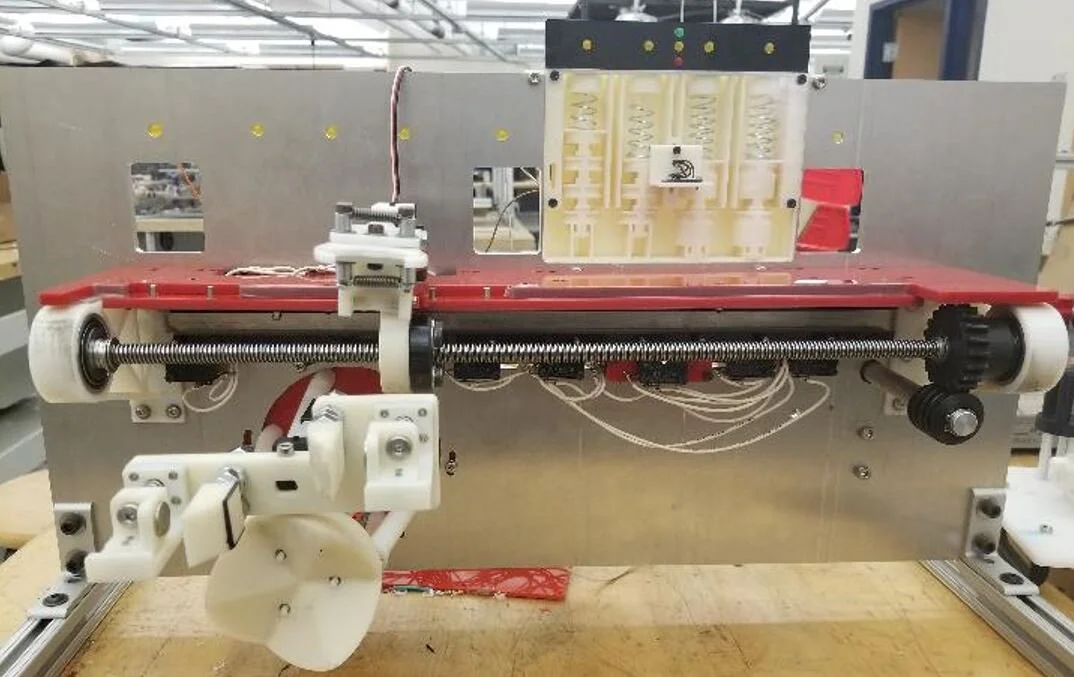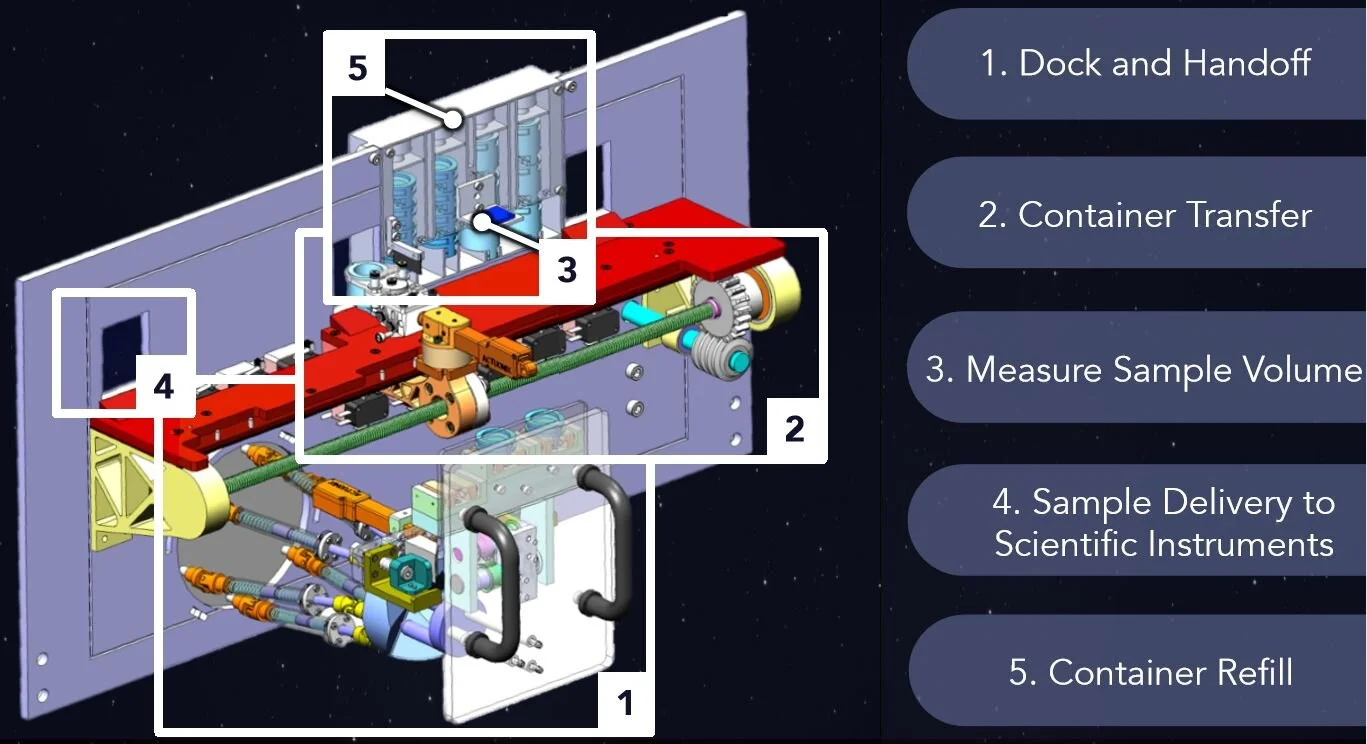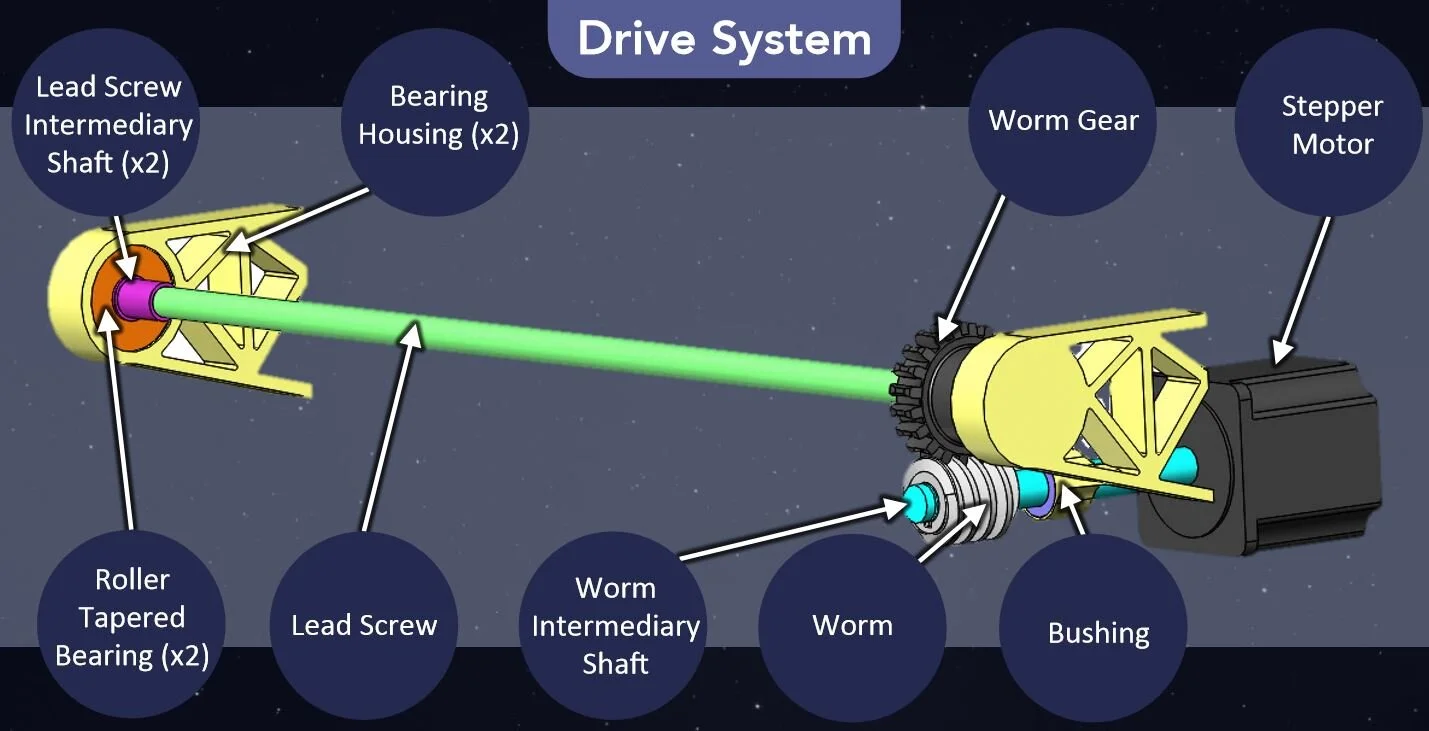Europa Lander
Senior Year Capstone Project
Objective:
Design and fabricate proof of concept system for transferal of surface sample from robotic arm to analytic instruments inside of vault. System must be designed to withstand Europan environment.
Industry Sponsor:
NASA Jet Propulsion Laboratory (JPL), who is designing a lander to go to Jupiter’s moon Europa to look for the presence of water (and thus potentially life)


Constraints:
Restricted volume envelope of .25m x .25m x .5m
Low weight restriction of 2kg
Primarily passive mechanisms to limit power usage
Outcome:
First team to develop complete, feasible solution, awarded “Best in Track” in capstone cycle
Though I assisted all team members throughout the duration of the project, I took personal responsibility for the transport and drive mechanisms. This entailed designing a subsystem capable of safely and accurately delivering samples, which I accomplished through the integration of personally fabricated, 3D printed, and COTS parts.
This drive system worked to translate a lead nut assembly carrying the sample axially along the lead screw. But in order to receive and deliver the samples, the lead nut assembly needed to rotate 180 degrees, and do so without the assistance of a second motor.
To make this possible, I adapted the Geneva drive, a mechanism which converts continuous rotational motion into intermittent rotary motion. Through strategic placement of pins, it is possible to turn continuous linear motion into discrete rotational movements. Thus, the lead nut assembly could rotate into the correct orientation passively.
For further information regarding designs and calculations, please contact me here.
Layout graphics courtesy of teammate Eileen Butler


